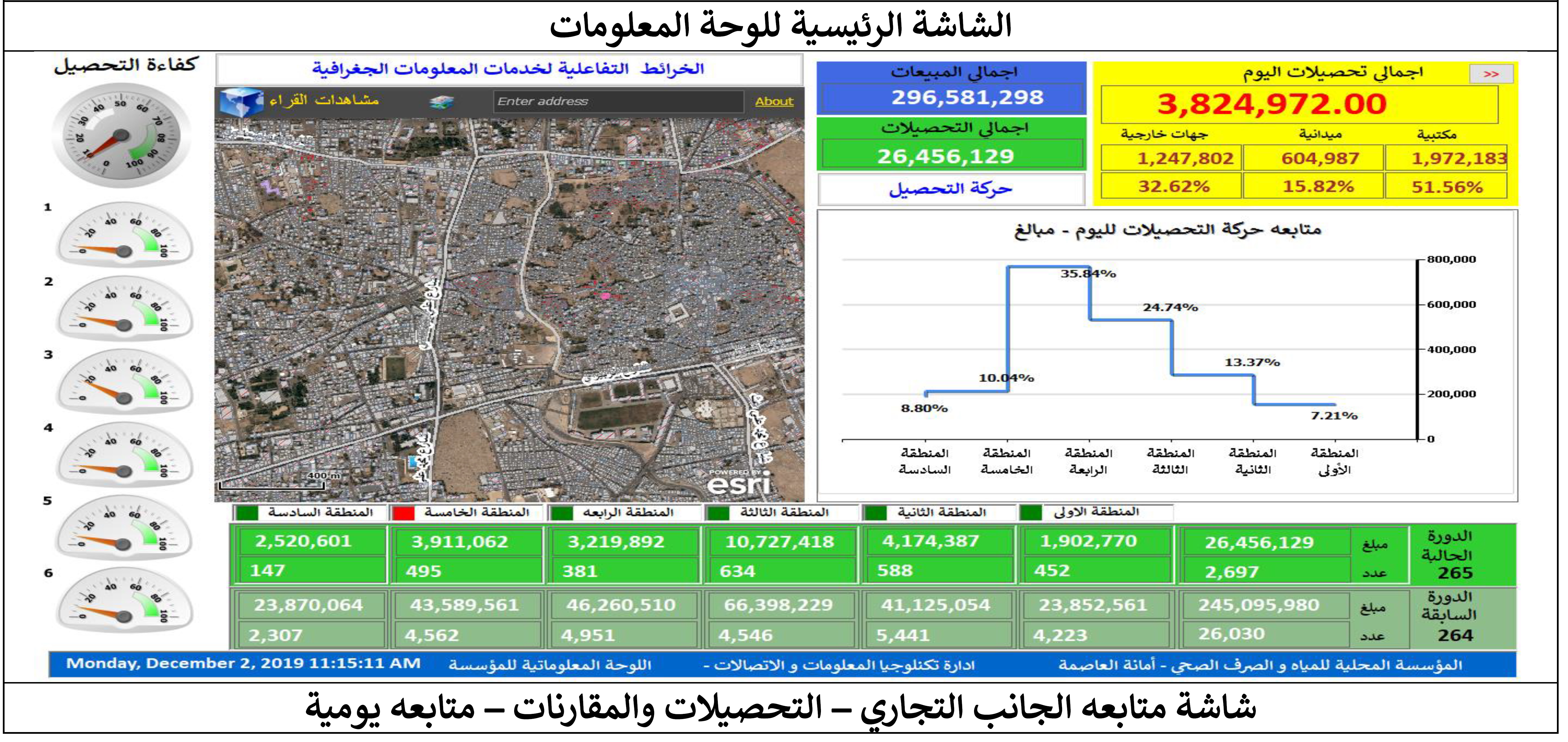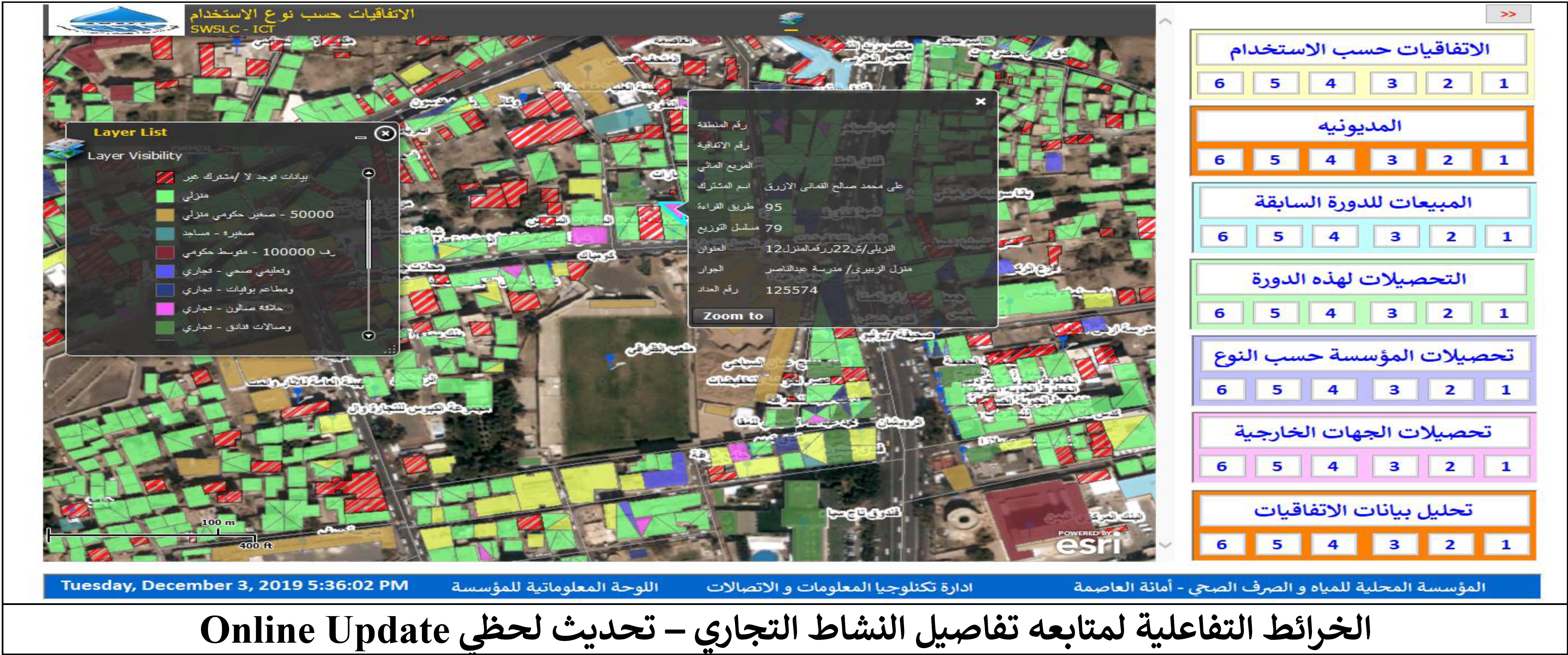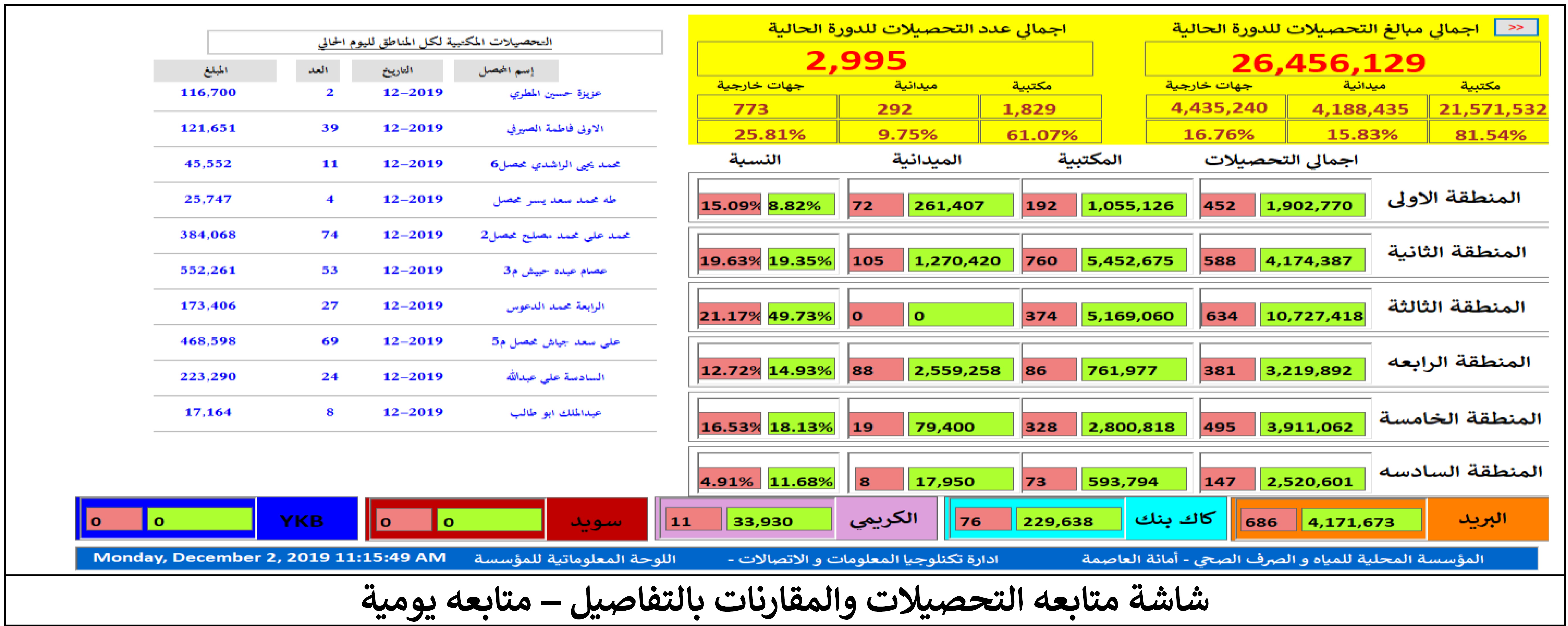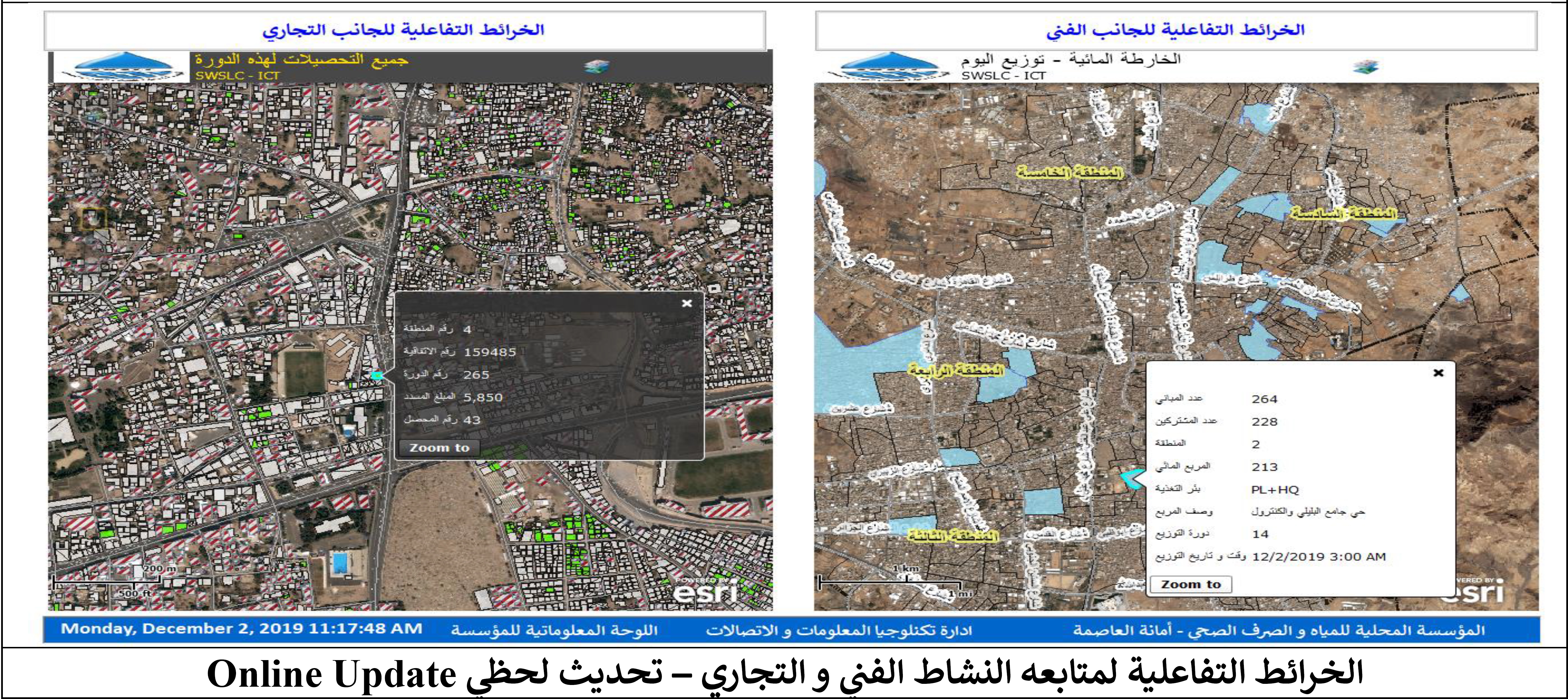
Near-Real-Time Dashboard
This initiative summarizes all the technical and commercial activities of the utility in interactive maps based on near real-time data. Sana’a LC prepared a specialized information system dedicated to this initiative and linked it to the utility’s billing and GIS databases. The utility equipped the offices of executives and relevant departments with large screens to jointly review the activities and indicators of the utility on a daily basis. The various departments in the utility were also trained on how to interpret the graphs and performance indicators that are presented in the dashboard. This practice enables the utility to monitor performance based on near real-time data and to provide timely responses. The practice is innovative and effective in optimising the technical and commercial performance of the utility.
Description of the problem
The war in Yemen has had profound repercussions on the overall performance of the utility and particularly on the financial liquidity, the daily production, revenue collection and the cost of operations. This situation made it even more important to be able to take quick decisions on the basis of real-time information. However an important problem was that different actors in the utility prepared their own progress reports which were not readily available and easily accessible. The information was not adequate to properly monitor daily activities and overall performance and did not support quick decision making in case of unforeseen events.
Description of the good practice
To help overcome the problem of data access for decision making and to be able to provide hands-on management, Sana’a LC initiated an innovative practice that enables the utility management in the different departments to have daily access to information on the utility activities and key performance indicators. A dashboard was developed which provides graphical at-a-glance information related to key performance indicators of the utility including financial, technical and organizational data (Figures 22-25). The commercial data include: customer registration, collected revenues (by type and collectors) and outstanding debts. The technical data include: a detailed water distribution map, the daily water supply schedule, daily water abstraction, operating data on pumps and generators, information on fuel and electricity consumption, and frequency of water distribution for each billing cycle
This dashboard is accessible through a web browser and is linked to data sources that are regularly updated. The dashboard assists the decision-makers to take decisions in a timely manner to improve performance, increase revenues, and respond to emerging problems. The dashboard displays the indicators and graphs, using dynamic GIS maps using nearly real-time data.
Impact and sustainability of the good practice
The introduction of the dashboard has resulted in a noticeable improvement in the overall performance of the utility. The almost real-time reports on monitoring cash flows (revenues) and the performance of the various operational and administrative units contributed to a significant increase in revenue collection, generating more resources to pay salaries of the employees and cover O&M costs. The dashboard also helps to track fieldwork, quickly correct deviations and supports decision-making.
Required resources
The use of this practice requires both technical resources and human skills. It is necessary to have a dedicated team of IT staff that may need to be trained to enhance their technical skills to facilitate operating the Dash Board and use GIS. It will also be required to identify the key indicators that will need to be reported upon and the way in which this information should be accessible. In addition staff will need to be briefed and trained on how to introduce the necessary data into the system and how to interpret results.
The technical resources include adequate computer software, computer equipment and a dedicated data base. It also will require wired and wireless networks within the utility.


